Humanoids as player
characters in AD&D®
games
by Joseph Clay
The following material
is highly variant, but gamers may use it to start an alternate campaign
in which the bad guys get a little glory for a change. If these rules
are not adopted for
PCs, a DM may wish to use them for creating extraordinary
NPCs (perhaps even
populating an isolated area of the world with "super humanoids" for the
PCs to fight. Note that the D&D® Gazetteer GAZ 10 The Orcs
of Thar
(released in December)
contains a humanoid character-generating system as well,
though this article
does not mesh with that or with other material on humanoids in
this magazine issue.
Exceptional humanoids are
rare and
distinct from the other
members of their
respective races. Such special
beings could
conceivably enjoy limited
level advancement, and a person playing a humanoid
character would have a unique
roleplaying challenge. Some people would like
the chance to be a rustic
and downright
disgusting orc after role-playing
one too
many noble elves. Other
maverick roleplayers may similarly want to play a
diminutive yet lethal kobold,
breaking out
of the mold of the average,
easily slain
humanoid. It is for these
people that the
following guidelines for
humanoid PCs
were created.
The pecking
order
To get the proper feel for
role-playing
humanoids, one must first
understand
their motivations. Humanoid
society is
usually formed into tribal
hierarchies with
the strongest members in
control. This
type of organization is
also found in wild
animal populations and is
often referred to
as the "pecking order!"
In groups of preda-
tory animals like wolves
or lions, the
rivalry of the pecking order
establishes
the most physically powerful
male as the
master of all he surveys.
This mastery
allows the strongest male
to have his first
choice of a mate, food,
and all else he
desires. The leading male
also has great
responsibilities in the
hunt and in the
protection of his group.
In humanoid
societies, the pecking order
works in
much the same way; in both
cases, the
group is there for the protection
of its
individual members over
all other outside
influences. Humanoids take
this reasoning
a step further so that all
other outside
influences must be eliminated,
controlled,
or used for group or individual
benefit.
Most humanoids fervently
believe that the
only way to get something
in life is to take
it by force.
Humanoids of all races will
not be
adverse to joining forces
in order to attack
common enemies; however,
each race is
aware that when the battle
is done, there
should only be one race
to claim the spoils.
Most of the time, different
humanoid
races war against each other
for food and
slaves. This intertribal
and interracial
warfare is imbedded in their
religions and
in their minds. The warring
weeds out the
weak and gives the survivors
power and
glory, thus establishing
the pecking order
on a large scale. Exceptional
humanoids
that become adventurers
are a result of
this weeding process, and
are nearly
always driven by the same
competitiveness their tribes possess.
Notes
on the tables
This article provides several
tables to
help DMs and players determine
the various aspects of humanoid PCs. Tables 1-3
provide minimum and maximum
attributes, the number of dice used to determine these attributes, and
any applicable
modifications made to the
rolls. These
figures are determined by
race, which is
reflected in the focus of
each table.
Thesetables are based on
Character
Race Table III: Ability Score Minimums & Maximums, on page
15 of the Players Handbook.
Tables 4-6 provide character-class
level
limitations. These limits
are determined by
race, as illustrated in
the focus of each
table.
Tables 4-6 are similar to
Character Race Table II: Class Level Limitations, on page 14 of the Players
Handbook.
Tables 7 and 8 provide racial
adjustments for humanoid thief and thiefacrobat abilities, respectively.
These tables are derived
from the Racial Adjustments sections of the Thief
Function Table on page 28 of the Players
Handbook,
and the Thief-Acrobat
Function Table on page 24 of Unearthed Arcana.
Table 9 is a new table;
it lists a number
of physical abnormalities
for humanoid
PCs which are described
in the following
section.
Table 10 lists starting
ages for each of the humanoid races (as in the NonHuman
Characters Table on page 12 of the Dungeon Masters Guide).
Table 11 shows the various
age categories for each humanoid race (as in the Age
Categories table on page 13 of the DMG).
Table 12 is the Shaman Experience
table;
it provides the experience
points, levels,
titles, and numbers of hit
dice for this
spell-casting class. Spells
for this class are
listed in Table 13. Table
14 (like Table 12)
lists experience information
for the witch
doctor character class.
Spells available to
this class appear in Table
15. These tables
are similar to those provided
in the Players Handbook
for the other character
classes.
P
h y s i c a l a b n o r m a l i t i e s
In some humanoid societies,
physical
abnormalities are a fact
of life. Abnormalities run from unfortunate deformities to
useful new abilities. Exceptional
humanoids are distinct from regular humanoids
because they are so often
remarkably
abnormal, even for humanoids.
Physical
abnormalities are determined
randomly by
rolling twice on Table 9.
These abnormalities are detailed as follows:
Abnormally tall:
Height is increased by
1-2?, weight by 20-40 lbs.,
and strength by
1 point. If height is increased
past 7? tall,
the humanoid is considered
to be in the
larger-than-man-size category
for weapon
damage.
Color blind:
Certain colors cannot be
distinguished and will appear
uniformly
gray, at the DM?s discretion.
Disgusting habit:
This causes a penalty
of -2 to charisma and comeliness.
Possible bad habits could include great uncleanliness, slobbering, belching,
or worse
(player's choice).
Disproportionate arms:
Increase
strength by 1 point, but
only with respect
to the use of hands, arms,
and shoulders.
This extra point of strength
may be used
for wielding hand weapons,
pummeling,
and grappling. In addition,
increase the
chance of successful climbing
by 5%.
Dumb: The humanoid
may be dumb, but
not stupid. Reroll intelligence
and wisdom
scores using 1d4 +4.
Furry/hairy:
The humanoid is covered in
heavy growths of fur. Improve
natural
armor class by 1 point and
give + 1 to
saving throws vs. cold damage.
Heightened smell:
The sense of smell is
highly acute, allowing the
humanoids to
distinguish hundreds of
different people
by scent alone. Surprise
rolls are granted
+ 1 in favor of an individual
with this
ability. Tracking by scent
can be done on a
20% chance.
Homing instinct:
With this ability, a lost
humanoid can always make
a straight-line
path to his home ground
(if he is on the
same world as his home).
Insanity: Roll
for the type of insanity on
page 83 of the DMG.
It is suggested that
insanity should be a type
that might
improve role-playing rather
than one of
the more serious, uncontrollable,
disruptive forms (like suicidal mania, etc.). [See
"Methods
to Your Madness," in DRAGON®
issue #138, for playable
types of character
insanity.]
Iron stomach:
An iron stomach-allows
the owner to eat bad food,
carrion, rats,
rot grubs, or anything that
might be
remotely edible with no
ill effects. Saving
throws vs. ingested poison
are at +4; if no
saving throw is normally
possible, the
humanoid gains a saving
throw of 16,
adjusted by other applicable
bonuses from
magical items.
Keen hearing:
The humanoid has an
80% chance to hear noise,
with a 20%
chance in the worst conditions.
Oversized claws:
The humanoid can
make regular claw attacks,
doing 1-4 hp
per clawed hand (two such
attacks per
round) plus bonuses for
strength.
Oversized teeth: The
humanoid can bite
for 1-4 hp damage (normally,
humanoid
bites only do 1 hp damage).
Psionics: This
rare humanoid is psionically endowed and must roll for psionic
ability, powers, and disciplines,
as per the
Players Handbook,
pages
110-117.
Stupid: Reroll
intelligence and wisdom
scores using 1d4 + 1. Although
not particularly bright, the humanoid with this affliction can be single-mindedly
tenacious. The
humanoid can continue to
fight for 1-4
melee rounds after reaching
zero through
- 6
h p b e f o r e b e i n g k i l l e
d . A t - 7 h p
o r
more, death is immediate.
Sensitive skin:
In direct sunlight, the
humanoid with this affliction
suffers 2 hp
damage per hour from burns.
Thick cranium:
The humanoid with this
enlarged forehead can use
it as a large,
hard object when pummeling
(Unearthed
Arcana, page
107). Subtract 1 point of
intelligence.
Tougher hide: Subtract 2 from the natural armor class of the humanoid.
Ugly:
Reroll comeliness using 1d6 + 2,
and subtract 1 point from
charisma (maximum score of 10 allowed)
Ugly (very):
Reroll charisma using
1d10 -8, and subtract 3
points from charisma (maximum score of 8 allowed).
Ugly (extremely):
Reroll comeliness using
2d6 -20, and subtract 5
points from charisma (maximum score of 6 allowed, with
no minimum score). If two
"Ugly" results
are rolled, the charisma
effects are cumulative and the lowest possible comeliness
score using either result
is adopted. Anyone who sees a humanoid with charisma
and comeliness scores of
negative values
must make a saving throw
vs. spells or be
affected as if by a
scare spell. It is obvious
that such a humanoid must
keep his face
covered when he is not in
private.
Table 1
Orc Attributes
| A t t r i b u t e | Min. | Max. | Dice | Mod. |
| Strength | 8 | 18/00 | 3d6 | + 1 |
| Intelligence | 2 | 16 | 2d8 | - |
| Wisdom | 2 | 16 | 2d8 | - |
| Dexterity | 2 | 17 | 3d6 | -1 |
| Constitution | 10 | 19 | 3d6 | +1 |
| Charisma* | 2 | 16 | 2d8 | - |
| Comeliness* | 2 | 12 | 2d6 | - |
* Add + 2 to the given charisma
when dealing with orcs from the PC's own tribe
Table 2
Goblin Attributes
| A t t r i b u t e | Min. | Max. | Dice | Mod. |
| Strength | 3 | 18/75 | 3d6 | - |
| Intelligence | 3 | 17 | 3d6 | - |
| Wisdom | 2 | 16 | 2d8 | - |
| Dexterity | 3 | 18 | 3d6 | - |
| Constitution | 8 | 17 | 3d6 | -1 |
| Charisma* | 2 | 16 | 2d8 | - |
| Comeliness* | 2 | 8 | 2d4 | - |
* Add + 2 to the given charisma
when dealing with goblins from the PC's own tribe.
Table 3
Kobold and Xvart Attributes
| A t t r i b u t e | Min. | Max. | Dice | Mod. |
| Strength | 3 | 15 | 3d6 | -1 |
| Intelligence | 2 | 16 | 2d8 | - |
| Wisdom | 2 | 16 | 2d8 | - |
| Dexterity | 3 | 18 | 3d6 | - |
| Constitution | 2 | 16 | 2d8 | - |
| Charisma* | 2 | 16 | 2d8 | - |
| Comeliness* | 2 | 8 | 2d4 | - |
Table 4
Class Level Limitations
(Orc)
| Ability Score | Shaman | Fighter | Magic-user | Thief | Assassin |
| 15 | 5 | 2 | 4 | 7 | 12 |
| 16 | 6 | 3 | 4 | 8 | 12 |
| 17 | 7 | 3 | 4 | 9 | 12 |
| 18 | 8 | 4 | 4 | 9 | 12 |
| 18/99 | - | 5 | - | - | - |
| 18/00 | - | 5 | - | - | - |
| 19 | 10 | 6 | 5 | 10 | 13 |
| 20 | 11 | 8 | 6 | 10 | 14 |
| 21 | 11 | 12 | 6 | 10 | 14 |
Table 5
Class Level Limitations
(Goblin)
| Ability Score | Shaman | Fighter | Magic-User | Thief | Assassin |
| 15 | 7 | 2 | 4 | 9 | 11 |
| 16 | 8 | 2 | 4 | 10 | 12 |
| 17 | 9 | 3 | 4 | 11 | 12 |
| 18 | 10 | 4 | 5 | 11 | 13 |
| 18/99 | - | 4 | - | - | - |
| 18/00 | - | 5 | - | - | - |
| 19 | 11 | 6 | 6 | 11 | 14 |
| 20 | 11 | 8 | 7 | 12 | 14 |
| 21 | 11 | 9 | 8 | 12 | 14 |
Table 6
Class Level Limitations
(Kobolds/Xvarts)
| Ability Score | Shaman | Fighter | Magic-User | Thief | Assassin |
| 15 | 5 | 2 | 2 | 10 | 10 |
| 16 | 6 | 2 | 2 | 11 | 10 |
| 17 | 7 | 2 | 3 | 12 | 11 |
| 18 | 8 | 2 | 4 | 12 | 11 |
| 18/50 | - | 3 | - | - | - |
| 18/75 | - | 4 | - | - | - |
| 18/99 | - | 5 | - | - | - |
| 19 | 10 | 6 | 5 | 12 | 12 |
| 20 | 10 | 6 | 6 | 12 | 12 |
| 21 | 10 | 7 | 8 | 12 | 12 |
Table 7
Racial Adjustments for
Thieves
| Race of the thief | Pick pockets | Open locks | Find/remove traps | Move silently | Hide in shadows | Hear noise | Climb walls | Read languages |
| Orc | -5% | +5% | +15% | - | - | +5% | +10% | -20% |
| Goblin | +5% | +5% | +5% | - | +5% | +5% | - | -10% |
| Kobold | +5% | +5% | +5% | +10% | +15% | +5% | -15% | -10% |
| Xvart | - | +5% | +5% | +10% | +15% | +5% | -15% | -5% |
Table 8
Racial Adjustments for
Thief-Acrobats
| Race of acrobat | Tightrope walking | Pole vaulting | High jumping | Broad jumping: standing | Broad jumping: running | Tumbling: attack | Tumbling: evasion | Tumbling: falling |
| Goblin | - | -2' | -1' | -1 1/2' | -2' | +5% | +10% | - |
| Kobold | - | -2' | -1' | -2' | -2' | - | +10% | -5% |
| Xvart | - | -2' | -1' | -2' | -2' | - | +10% | -5% |
Starting
money
For the sake of simplicity,
all humanoids
can be given the starting
money normally
allowed to their prospective
classes. But if
a DM wishes to create a
more challenging
dilemma for starting humanoids,
he may
equip each of them with
any three of the
following useful groups
of things instead
(player's choice): any one
weapon; one suit
of ring mail, studded leather,
or leather
armor; a shield (any size);
one week's food
and water; a pouch with
2-8 random coins
(with thieves picks and
tools if the humanoid has thieving abilities); a completely
loyal,
immature pet (must be a nonmagical
mammal having 5 HD or less
when full
grown);
a wooden holy symbol (for
shamans and witch doctors); a crudely made
spell book (written on thin
wooden sheets
or old paper) for witch
doctors, with spell
components for 2d10 castings;
one set of
very warm furs, a hat, boots,
and gloves;
1-4 one-gallon jugs of highly
volatile drinking grog; 1-2 flasks of oil; one flask of a
randomly determined poison
(DM's decision as to potency, effects, and use). Motheaten or dirty old
garments are free for
starting humanoids. The
DM must remind
the humanoid that he comes
from a technologically backwards, if not impover
ished, tribal situation;
even shoes or boots
are rarely available.
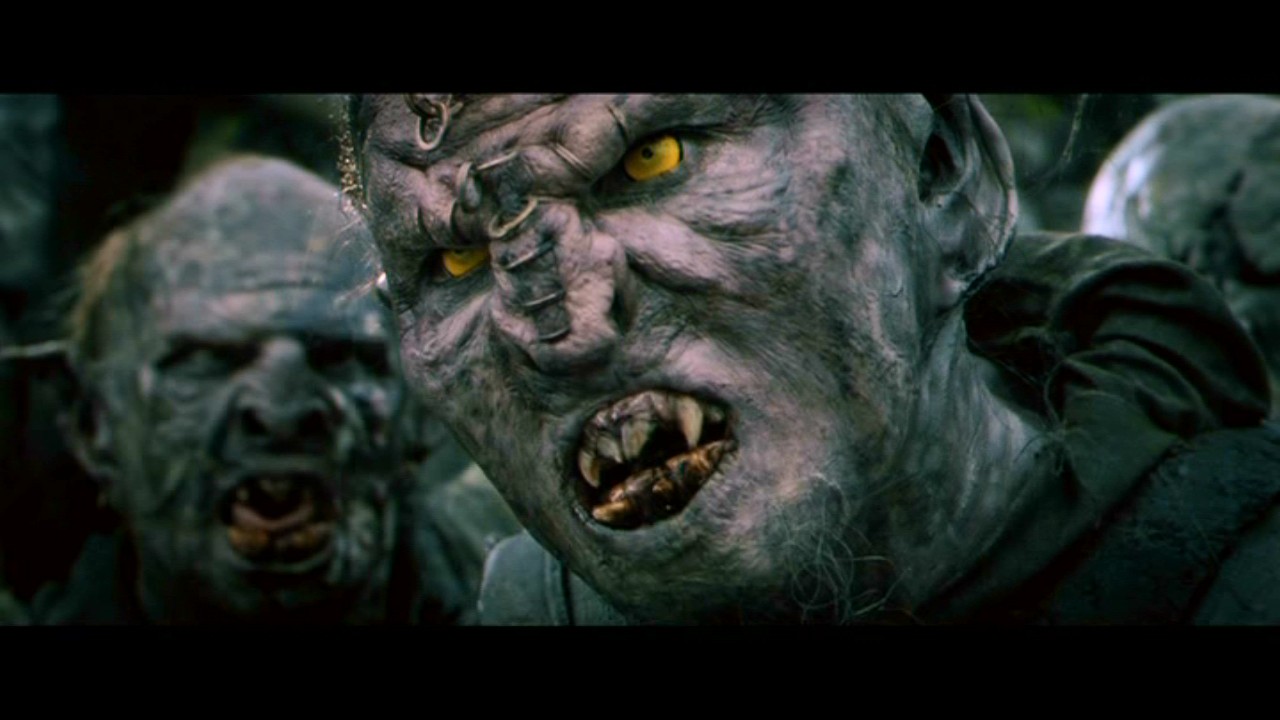
Exceptional orcs may be fighters,
shamans, magic-users, thieves, or assassins.
Orcs may be multiclassed
as witch doctors, fighter/assassins, or shaman/thieves.
Orcs have a natural armor
class of 10,
modified by dexterity and
armor. In addition to their own language, orcs speak
Goblin, Hobgoblin, Ogrish,
and a crude
form of Common. They also
speak their
alignment language but can
learn no additional languages. Orcs pick up most
obscene and slang words
and phrases if
exposed to a given language
for more than
one week?s time.
Orcs have infravision to
a 6? range; in
bright light, they take
a penalty of - 1 on
?to hit? rolls and saving
throws. Orcs have
a base movement rate of
12?) an average
weight of 170 +2d12 lbs.,
and an average
height of 66 +4d4? (about
6?). All orcs
have excellent mining skills,
and exceptional orcs have a 35% chance to detect
grade, slope, new construction,
sliding
walls, traps, and depth
underground.
Many orcs have the ability
to construct
large engines of destruction,
such as catapults, battering rams, etc.; some orcs have
extra proficiency in the
use of one specific
siege-engine type, receiving
a + 1 bonus
on ?to hit? rolls. A few
know how to train
elephantine creatures as
war mounts.
Orcs can handle any hand-held
weapons
that humans can handle.
Orcs hate elves and their
ilk, and will
generally attack them before
attacking any
other creature. Exceptional
orcs will tolerate elves as long as there is no impertinence. This balanced
tolerance rarely
prevents an orc from using
harmless but
vulgar puns which the orc
regards as high
sarcasm. All orcs are rude,
crude, and
have bad manners, especially
when fighting and eating. Attempts at teaching an
orc complex tasks sometimes
result in
vaguely acceptable behavior,
although this
is usually perverted into
unintentional
parodies of the desired
goal.
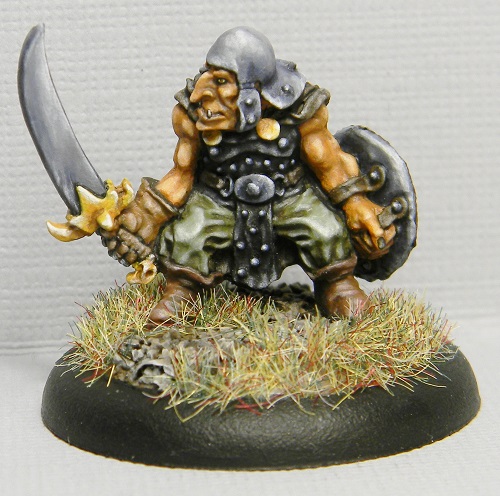
Goblins may be fighters,
shamans,
magic-users, thieves, assassins,
or thiefacrobats. They may be multiclassed as
witch doctors, fighter/shamans,
fighter/
thieves, fighter/witch doctors,
and
s h a m a n / t h i e v
e s .
Goblins have a natural armor
class of 10,
modified by dexterity and
armor type. In
addition to their own language,
goblins
also speak Hobgoblin, Kobold,
Orcish, and
a stilted form of Common.
They also speak
their alignment language
and a maximum
of one other language, regardless
of intelligence. A goblin can call off attacks from
wolves, worgs, and most
dogs if he rolls
his charisma or less on
1d20, with a + 2
bonus.
Goblins have infravision
to a 6? range.
In bright light, goblins
take a penalty of
- 1 on "to hit" rolls and
on saving throws.
Goblins have a base movement
rate of 6?)
an average weight of 70
+2d10 lbs., and
an average height of 43
+ 2d4?. Goblins
have fair mining skills,
with a 25% chance
to detect grade, slope,
new construction,
sliding walls, traps, and
depth underground. When attacked by larger-thanman-size creatures, goblin
characters
subtract 1 from their opponents
?to hit?
rolls because of the relative
speed and
small size of goblins.

Goblins hate gnomes and dwarves,
and
will generally attack them
before attacking
any other creature. Exceptional
goblins
might rein-in their racial
hatreds in order
to benefit from mutual cooperation,
but
this does not keep them
from subterfuge,
manipulation, or worse at
a later date.
Goblins of all alignments
can have henchmen, but evil goblins will literally enslave
their followers.
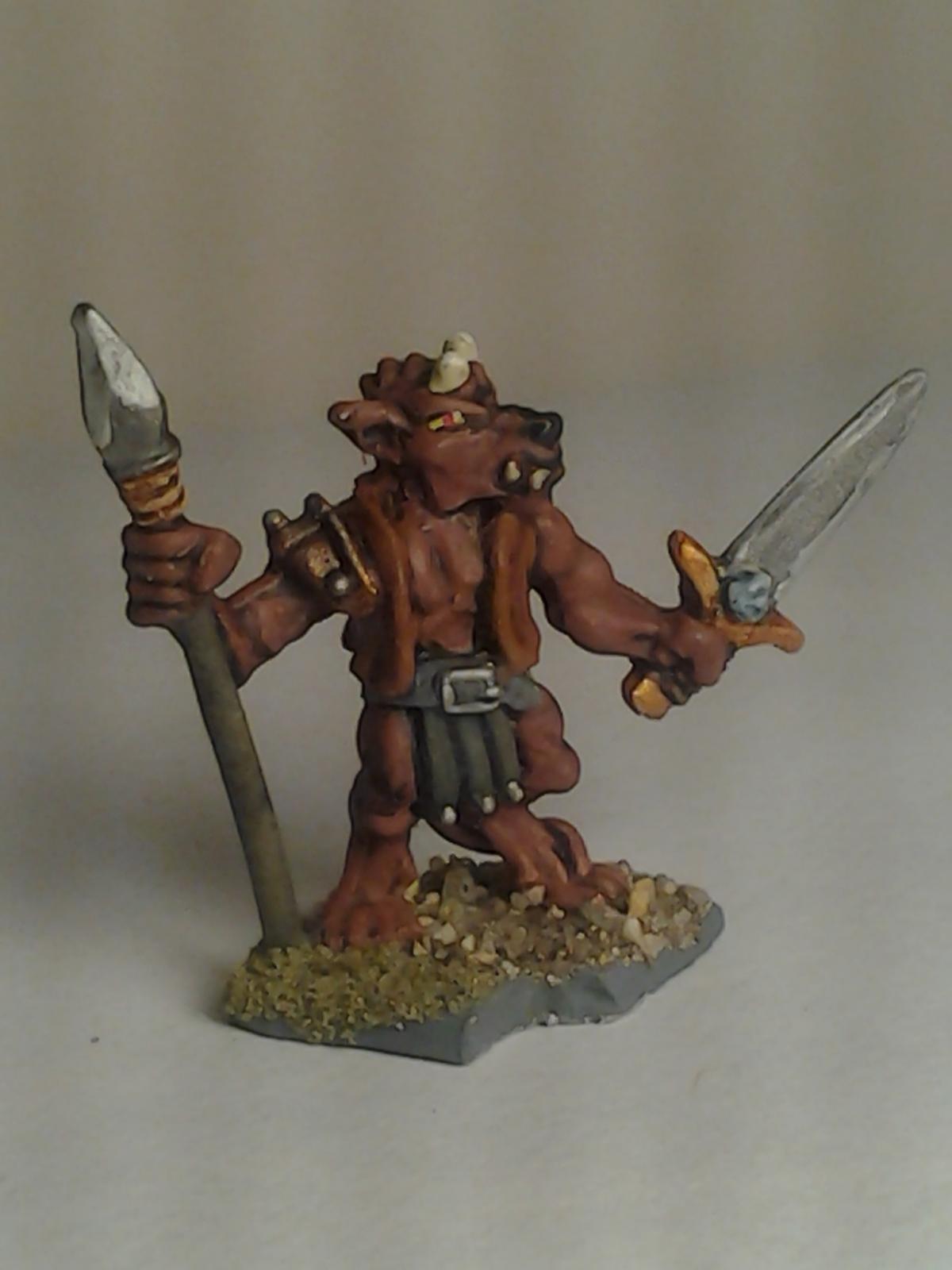
Kobolds and their blue-skinned
cousins
may become fighters, shamans,
magicusers, thieves, assassins, or thief-acrobats.
They may be multiclassed
as witch doctors, fighter/shamans, fighter/magic-users,
fighter/witch doctors, fighter/thieves,
fighter/assassins, shaman/thieves,
shaman/
assassins, magic-user/thieves,
or witch
doctor/thieves.
Kobolds speak their own language,
Goblin, and Orcish; xvarts know their own
tongue, Kobold, and Goblin.
These two
races also speak their alignment
languages
and a maximum of one more
language.
Kobolds can deal with wild
boars and
giant weasels as goblins
do large canines,
and xvarts deal with all
rats and bats in a
similar fashion.
Kobolds and xvarts have infravision
out
to a 6" range; in bright
light, they take a
penalty of - 1 on "to hit"
rolls and on
saving throws. Their base
movement rate
is 6?) average weight is
34 + 2d6 lbs., and
average height is 31+ 2d8".
Kobolds have
a natural armor class of
8 and xvarts of
10, with modifications for
armor worn
and dexterity. When being
attacked by
larger-than-man-size creatures,
these
beings subtract 1 from their
opponents ?to
hit? rolls because of the
size differential.
Normal kobolds and xvarts
almost
always live in large war
bands which
makes up for their individual
small sizes.
Exceptional kobolds and
xvarts compensate for their smallness by the use of cunning tactics, common
sense, and raw skill;
still, they realize that
safety lies in num
bers and will always retain
good standing
within one or more tribes.
Each such
humanoid therefore finds
it advantageous
to increase the size and
might of his tribe,
indirectly gaining more
prestige and personal power. For example, by seeking to
improve tribal ironworking
techniques,
the exceptional kobold benefits,
as his
tribe can create better
weapons and
armor of higher protective
value. These
smallest beings must look
after each other
in order to survive annihilation
by their
numerous enemies. To reflect
this tribal
orientation, an exceptional
kobold or xvart
adds double his level of
experience to his
charisma score to get the
charisma effect
when dealing with humanoids
of his own
tribe.
Since so many assorted creatures
attack
them, kobolds have become
clever haters,
particularly despising the
likes of brownies, pixies, sprites, and gnomes. Exceptional kobolds tolerate
the more powerful
gnomes only if they can
ignore them. Any
conversation with these
races is terse and
to the point. By
contrast, xvarts seem to
hate
everyone equally.
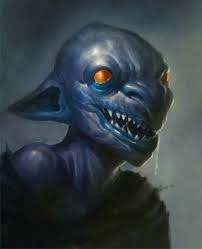
Table 9
Physical Abnormalities
| 1d100 | Abnormality |
| 0 1 - 0 2 | A b n o r m a l l y t a l l |
| 0 3 - 0 6 | Color blind |
| 0 7 - 1 0 | Disgusting habit |
| 1 1 - 1 2 | Disproportionate arms |
| 1 3 - 1 6 | D u m b |
| 1 7 - 2 0 | Furry/hairy |
| 2 1 - 2 2 | Heightened smell |
| 2 3 - 2 5 | Homing instinct |
| 2 6 - 2 7 | Infravision |
| 2 8 - 3 0 | I n s a n i t y |
| 3 1 - 3 4 | Iron stomach |
| 3 5 - 3 6 | Keen hearing |
| 3 7 - 3 8 | O v e r s i z e d c l a w s |
| 3 9 - 4 2 | Oversized teeth |
| 4 3 | P s i o n i c |
| 4 4 - 4 5 | S t u p i d |
| 4 6 - 4 9 | Sun-sensitive skin |
| 5 0 - 5 1 | Thick cranium |
| 5 2 - 5 3 | Tough hide |
| 5 4 - 5 9 | U g l y |
| 6 0 - 6 4 | Ugly (very) |
| 6 5 - 6 6 | Ugly (extremely) |
| 6 7 - 9 4 | N o a b n o r m a l i t i e s |
| 9 5 - 9 9 | Roll again twice |
| 0 0 | Player's choice |
Table 10
Age categories
| Race | Young adult | Mature | Middle aged | Old | Venerable |
| Goblin | 10-12 | 13-25 | 26-35 | 36-50 | 51-65 |
| Kobold/Xvart | 20-30 | 31-65 | 66-100 | 101-135 | 136-180 |
| Orc | 8-10 | 11-20 | 21-30 | 31-40 | 41-55 |
Table 11
Humanoid Starting Age
| Race | Cleric | Fighter | Magic-user | Thief |
| Goblin | 9+1d4 | 9+1d4 | 13+1d8 | 9+1d4 |
| Kobold/Xvart | 28+1d4 | 20+1d4 | 37+2d12 | 26+1d4 |
| Orc | 7+1d4 | 7+1d4 | 11+1d6 | 7+1d4 |
Table 12
Shaman Experience Table
| Experience
points |
Experience
level |
8-sided dice for
accumulated hit points |
Level
title |
| 0-2,000 | 1 | 2 | Minor shaman |
| 2,001-4,000 | 2 | 3 | Minor shaman |
| 4,001-8,000 | 3 | 4 | Minor shaman |
| 8,001-17,500 | 4 | 5 | Shaman |
| 17,501-35,000 | 5 | 6 | Shaman |
| 35,001-70,000 | 6 | 7 | Shaman |
| 70,001-140,000 | 7 | 8 | Shaman priest |
| 140,001-285,000 | 8 | 9 | Shaman priest |
| 285,001-570,000 | 9 | 10 | Shaman priest |
| 570,001-845,000 | 10 | 10+2 | Greater shaman |
| 845,001+ | 11 | 10+4 | Greater shaman |
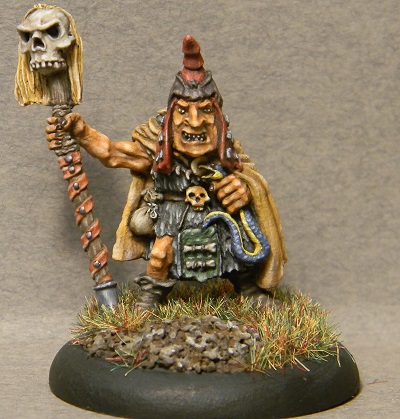
The shaman is a primitive
subclass of
the cleric. A character
must have a mini
mum wisdom ability score
of 9 to be a
shaman; if wisdom is greater
than 15, the
character adds 10% to the
experience
points awarded to him by
the referee, A
shaman PC also gains bonus
spells from
high wisdom.
The shaman is dedicated to
a deity and
urges his tribe to worship
that god. The
shaman's alignment is that
of his deity, and
he uses the weapon and armor
types used
by that deity and by his
own tribe.
PC shamans are limited to
the casting of
certain spells; these are
listed hereafter.
Shamans have the same number
of spells
usable per level as clerics,
using these
spells to protect the welfare
of their
tribes. Shamans may additionally
use
clerical scrolls with spells
other than those
on the shamans? spell table.
Shamans use the cleric's
fighting and
saving-throw tables. All
saving throws vs.
disease and poison are made
at +2, due to
the hardy lifestyle of the
shaman.
The shaman character has
some of the
primary abilities of the
barbarian class.
These primary abilities
are: hide in natural
surroundings, surprise,
and leadership.
The shaman also has the following
barbarian-class secondary
abilities: survival, first aid, outdoor craft, and tracking.
Exceptional humanoid shamans
also
have sage knowledge, having
two to four
special categories within
the major field of
study. The major field of
study will, of
course, always be ?Humanoids
and
Giantkind.? Shamans can
read and write
any language they can speak
with a 5%
chance of success per intelligence
point.
Humanoid shamans of 9th
level can
concoct poison as assassins
can. Scrolls
may be inscribed by shamans
of 7th level
only if the shamans can
use the spells they
inscribe.
If and when a humanoid shaman
achieves 8th level, he automatically
attracts humanoid followers
if he establishes a place of worship. These humanoid
followers are fanatically
loyal and serve
without pay as long as the
shaman does
not change deities or alignment.
The number of humanoid followers is the same as
the "Number Appearing" statistic
found in
the Monster Manual
under the appropriate humanoid type.
<
Orc: 30-300
Goblin: 40-400
Kobold: 40-400
Xvart: 40-400
>
In addition, there will
be subleaders of the appropriate
type and
4-20 temple guards (normal
humanoids
with maximum hit points).
For each
advance in level beyond
the 8th, the shaman gains 2-20 additional humanoid followers. The shaman
may also build a
castle or some type of fortified
temple
upon reaching 9th level,
as would a normal cleric.
T a b l e
1 3
Shaman Spells
| N u m b e r | 1st level | 2nd level | 3rd level | 4th level | 5th level | 6th level |
| 1 | Ceremony | Augury | Cure blindness | Abjure | Animate dead monsters | Animate object |
| 2 | Cure light wounds | Chant | Cure disease | Control temperature 10' radius* | Atonement | Conjure animals |
| 3 | Detect evil | Detect charm | Death's door | Divination | Commune | Find the path |
| 4 | Detect magic | Detect life | Dispel magick | Exorcise | Control winds* | Forbiddance |
| 5 | Light | Holy symbol | Flame walk | Neutralize poison | Cure critical wounds | Heal |
| 6 | Portent | Resist fire | Locate object | Produce fire* | Dispel magic <evil?> | Speak with monsters |
| 7 | Protection from evil | Snake charm | Prayer | Spell immunity | Quest | Stone tell |
| 8 | Resist fear <Remove fear?> | Speak with animals | Remove curse | Tongues | True seeing | Weather summoning |
* As the druidic spell of the same level
The tribal magic-user
The tribal magic-user is
the same as a
regular magic-user, except
that spell lists
are more limited for magicians
in such
rustic situations. The spells
of tribal magicusers are engraved into poor-quality paper
or wooden tablets because
the expensive
parchment required to make
a proper
spell book is beyond the
technological
capabilities of most humanoid
tribes.
These spell "books" are
bulky, having an
encumbrance value of 10
gp per spell level
for wooden tablets and 3
gp per spell level
for paper books.
Humanoid magic-users and
witch doctors are initially limited in magic-user
spells, but they may attempt
to learn and
use other magic-user spells
if such are
accessible. The spells must
be provided by
the very few human or demi-human
magic-users who are willing
to trade with
humanoids (or are forced
to do so). Since
the providing magic-user
runs the risk of
being labeled as a traitor
(or worse), he
will certainly charge many
times the formal fee for such services. Exceptional
magic-users and witch doctors
all begin
with the spells read
magic and write, with
1-3 other spells as well.
Wooden or parchment scrolls
may be
inscribed by 7th- or higher-level
tribal
spell-casters, so long as
the spells involved
are on their allowed spells
lists.
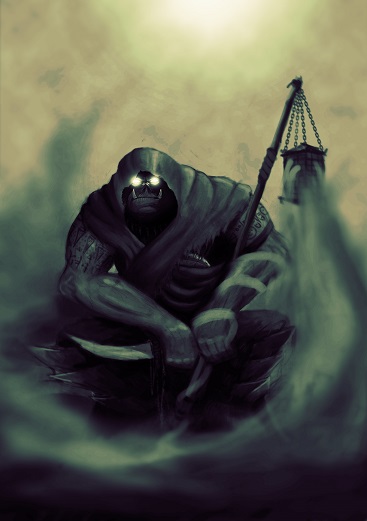
Witch doctors are a special
form of
multiclassed magic-user/shaman
open only
to humanoids. The witch doctor
differs
from other multiclasses
because a six-sided
die per level is used to
determine hit
points. Witch doctors have
all the abilities
and level limitations of
shamans.
The ability to learn and
memorize
magic-user spells is restricted
by the level
limitations of the tribal
magic-user class,
even though the witch doctor
can achieve
higher levels.
In addition to the special
abilities of
shamans, witch doctors
have other skills.
At 3rd level, witch doctors
can brew
crude alcoholic beverages.
At 5th level, the
following spells can be
brewed as potions:
cure blindness, cure disease,
cure light
wounds, resist fear,
and resist fire. Neutralize poison and spell immunity
can be
brewed as potions upon attaining
7th
level.
Also at 7th level, a witch
doctor has
sufficient alchemical ability
with which to
construct a homonculous.
Note that no aid
from an alchemist is required
unless the
witch doctor wishes to make
other potion
types.
Table 14
Witch Doctor's Experience
Table
| Experience points | Experience level | 6-sided dice for accumulated HP | Level title |
| 0-4,500 | 1 | 1 | Acolyte |
| 4,501-9000 | 2 | 2 | Evoker |
| 9,001-18,000 | 3 | 3 | Witch-Conjurer |
| 18,001-39,500 | 4 | 4 | Bewitcher |
| 39,501-75,000 | 5 | 5 | Witch-Brewer |
| 75,001-130,000 | 6 | 6 | Witch-Brewer |
| 130,001-230,000 | 7 | 7 | Witch-Brewer |
| 230,001-420,000 | 8 | 8 | Witch Doctor |
| 420,001-820,000 | 9 | 9 | Witch Doctor |
| 820,001-1,220,OOO | 10 | 9+2 | Witch Doctor |
| 1,220,001+ | 11 | 9+4 | Witch Doctor |
Table 15
Tribal Magic-user and
Witch Doctor Spells
| Number | 1st level | 2nd level | 3rd level | 4th level |
| 1 | Affect normal fires | Audible glamer | Clairaudience | Dig |
| 2 | Dancing lights | Bind | Clairvoyance | Enchanted weapon |
| 3 | Identify | Detect invisibility | Defect illusion | Fear |
| 4 | Jump | Invisibility | Dispel magick | Plant growth |
| 5 | Mending | Levitate | Flame arrow | Polymorph other |
| 6 | Push | Magic mouth | Haste | Polymorph self |
| 7 | Run | Mirror image | Invisibility, 10' radius | Remove curse |
| 8 | Shield | Preserve | Material | Ultra vision |
| 9 | Taunt | Scare | Protection from normal missiles | Stoneskin |
| 10 | Ventriloquism | Shatter | Slow | Wizard eye |
zb
1.
Koromundu (frost giant witch doctor; 91.217)
(see Blizzard)
Blizzard (252: mature adult | 91.218)
(see Koromundu)